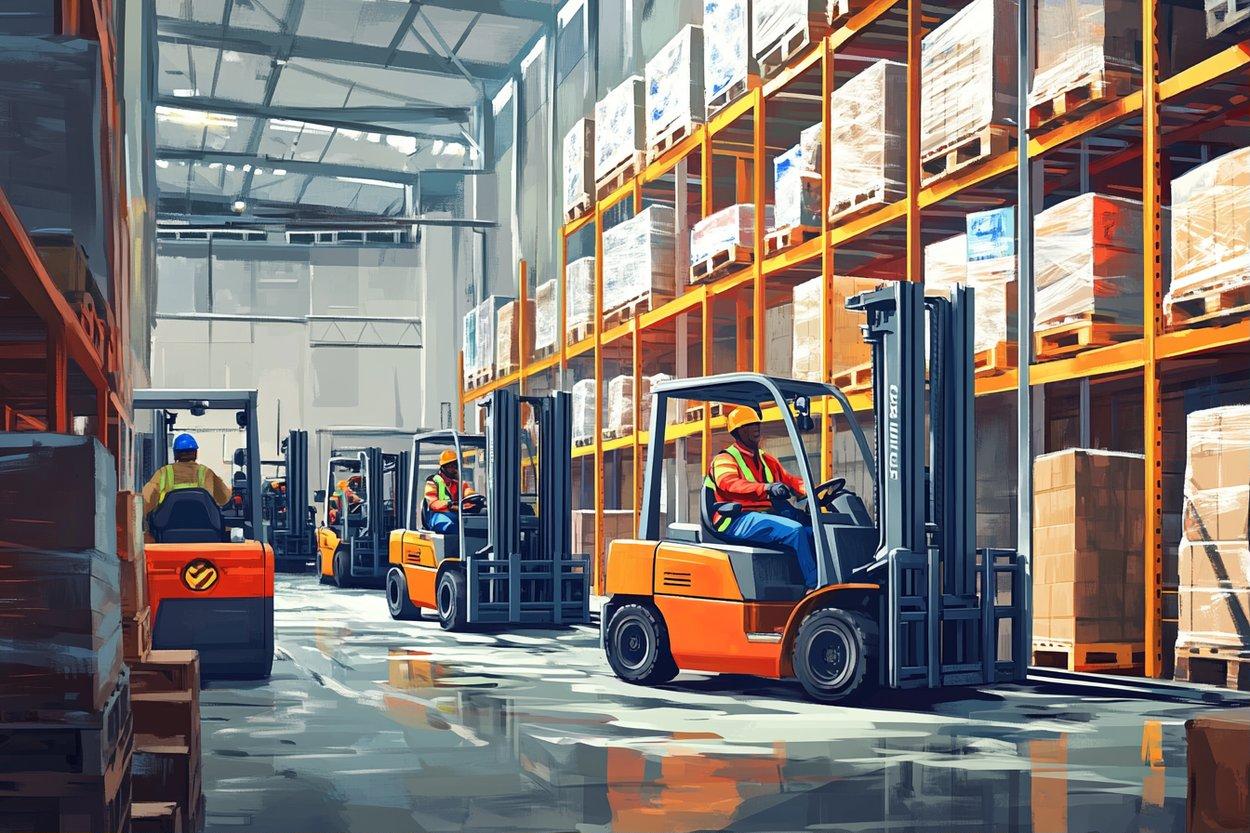Fascinating Facts About Warehouses and the People Who Keep Them Running
Warehouses are the hidden backbone of global trade, storage, and logistics. Behind every product you receive, there’s a team of dedicated warehouse professionals ensuring that goods are packed, stored, and delivered efficiently. Discover surprising facts about warehouse operations, the essential role of warehouse workers, and how this vital industry supports the global economy.

Warehouses form the backbone of international trade, serving as critical hubs where goods are stored, sorted, and dispatched. Without these facilities and the dedicated professionals who operate them, the seamless flow of products across continents would be impossible. Modern warehouses have evolved far beyond simple storage spaces, incorporating advanced technology and sophisticated processes that maximize efficiency and accuracy.
Learn More About How Warehouses Keep Global Trade Moving
Warehouses function as strategic nodes in supply chains, connecting manufacturers with retailers and ultimately with consumers. These facilities handle inventory management, order fulfillment, quality control, and distribution coordination. The global logistics network depends on warehouses to buffer supply and demand fluctuations, ensuring products are available when and where needed. In Germany alone, the logistics sector employs hundreds of thousands of workers, with warehouses playing a central role in this infrastructure. The efficiency of warehouse operations directly impacts delivery times, product availability, and overall customer satisfaction across industries.
Discover Interesting Facts About Warehouse Operations and Logistics
Modern warehouse operations involve intricate processes that most consumers never see. Goods arriving at warehouses undergo receiving inspections, are assigned storage locations based on sophisticated algorithms, and are tracked using barcode or RFID systems. Pick-and-pack operations require precision, as workers or automated systems retrieve specific items from thousands of possibilities to fulfill individual orders. Cross-docking techniques minimize storage time by transferring incoming goods directly to outbound vehicles. Warehouses also manage returns processing, quality inspections, and inventory cycle counts. The coordination required to handle thousands of SKUs daily while maintaining accuracy rates above 99 percent demonstrates the complexity of these operations.
Find Out What Makes Warehouse Work Essential to Every Supply Chain
Every product purchased online or in stores has likely passed through at least one warehouse. These facilities enable businesses to maintain inventory without tying up capital in retail space, allowing for economies of scale in storage and distribution. Warehouses provide buffering capacity that smooths seasonal demand variations, ensuring retailers can stock up before peak periods. They also enable consolidation, where multiple small shipments combine into larger, more cost-effective loads. The strategic placement of warehouses reduces transportation distances and costs while improving delivery speed. Without warehouse infrastructure, the just-in-time delivery expectations of modern commerce would be impossible to meet.
Explore the Modern Technology Transforming Warehouse Efficiency
Technological innovation has revolutionized warehouse operations over recent decades. Warehouse Management Systems (WMS) coordinate all activities, optimizing storage locations, picking routes, and labor allocation in real time. Automated Storage and Retrieval Systems (AS/RS) use robotic cranes to move goods with minimal human intervention. Autonomous mobile robots navigate warehouse floors, transporting items between stations. Voice-picking systems allow workers to receive instructions through headsets, keeping their hands free and eyes focused on tasks. Some facilities now employ drones for inventory counting, scanning barcodes on high shelves in minutes rather than hours. Artificial intelligence analyzes patterns to predict demand, optimize layouts, and prevent stockouts. These technologies increase throughput, reduce errors, and improve workplace safety while allowing warehouses to handle growing order volumes.
Understand the Vital Role Warehouse Professionals Play Worldwide
Behind every efficient warehouse operation are skilled professionals whose expertise keeps goods moving. Warehouse workers perform diverse tasks including receiving, stocking, picking, packing, and shipping. Forklift operators maneuver heavy pallets through narrow aisles with precision. Inventory specialists ensure accurate stock counts and prevent discrepancies. Supervisors coordinate teams, troubleshoot problems, and maintain productivity standards. Warehouse managers oversee entire operations, balancing efficiency, safety, and cost considerations. These roles require physical stamina, attention to detail, and increasingly, technical skills to operate sophisticated equipment and software. The workforce adapts continuously to new technologies and processes, demonstrating flexibility and commitment to maintaining supply chain reliability.
The Human Element in Automated Environments
Despite increasing automation, human workers remain indispensable in warehouse operations. Complex decision-making, problem-solving, and adaptability to unexpected situations require human judgment that technology cannot fully replicate. Workers handle irregular items that automated systems struggle with, manage exceptions in order processing, and maintain equipment. The most advanced warehouses combine human expertise with technological tools, creating hybrid environments where each complements the other. Training programs help workers develop skills in operating new technologies, ensuring they remain valuable contributors as warehouses evolve. The relationship between technology and workforce continues developing, with successful operations recognizing that investment in both areas yields optimal results.
Conclusion
Warehouses represent far more than storage facilities—they are sophisticated operations centers essential to global commerce. The combination of strategic logistics, advanced technology, and skilled professionals creates systems capable of handling millions of items with remarkable precision. As e-commerce grows and consumer expectations for fast delivery intensify, warehouses will continue evolving, adopting new technologies while relying on dedicated workers to maintain the flow of goods that modern society depends upon. Understanding these operations provides insight into the complex infrastructure supporting everyday convenience.




